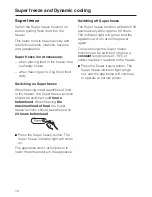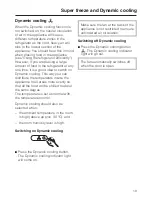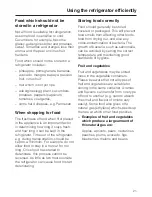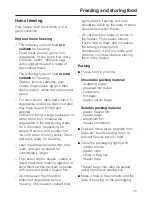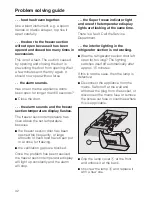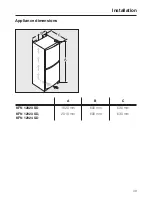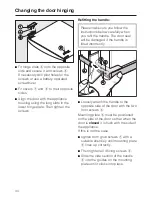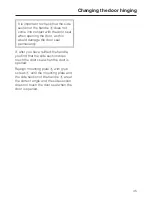
Repairs to electrical appliances
should only be carried out by a
suitably qualified and competent
person in strict accordance with
current local and national safety
regulations. Repairs and other work
by unqualified persons could be
dangerous. The manufacturer
cannot be held liable for
unauthorised work.
What to do if . . .
. . . the appliance does not get cool.
^
Check whether the appliance has
been switched on. The temperature
display must be lit up.
^
Check that the plug is correctly
inserted into the socket and switched
on.
^
Check that the fuse is not defective
and that the mains fuse has not
tripped. If it has, contact the Miele
Service Department.
. . . the temperature in the refrigerator
section or freezer section is too low.
^
Set a warmer temperature.
^
The Super freeze function is still on
and the Super freeze indicator light is
on.
The Super freeze function switches
itself off automatically after approx.
65 hours.
^
Check that the doors have been
closed properly.
^
Has a large amount of fresh food
been frozen at the same time?
This makes the compressor run for
longer, causing the temperature in
the refrigerator section to fall
automatically.
. . . the compressor is switching in
too frequently and for too long.
^
Check whether the ventilation gaps
have been covered over or become
dusty.
^
Check whether the metal grille (heat
exchanger) at the back of the
appliance has become too dusty.
^
The doors have been opened too
frequently, or a large amount of fresh
food has been put in at once for
freezing.
^
Check that the doors have been
closed properly.
. . . the frozen food is thawing
because the freezer section is too
warm.
^
Is the room temperature lower than
the ambient temperature for which
the appliance is designed?
If so, raise the temperature of the
room.
Operating in a room which is too cold
will cause the cooling system to switch
off for too long, causing the freezer
section to become too warm.
Problem solving guide
31


